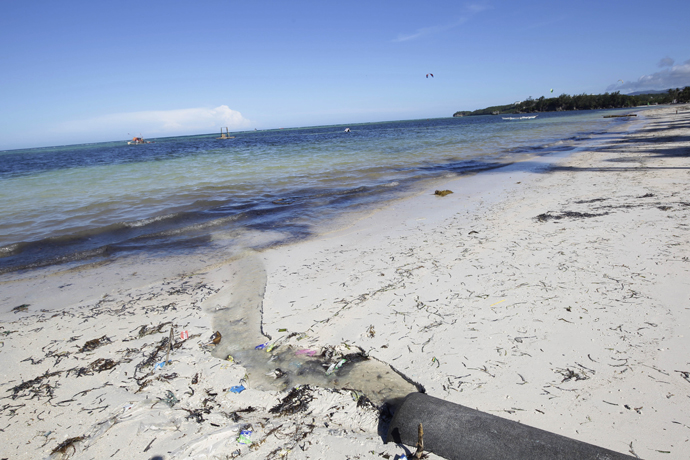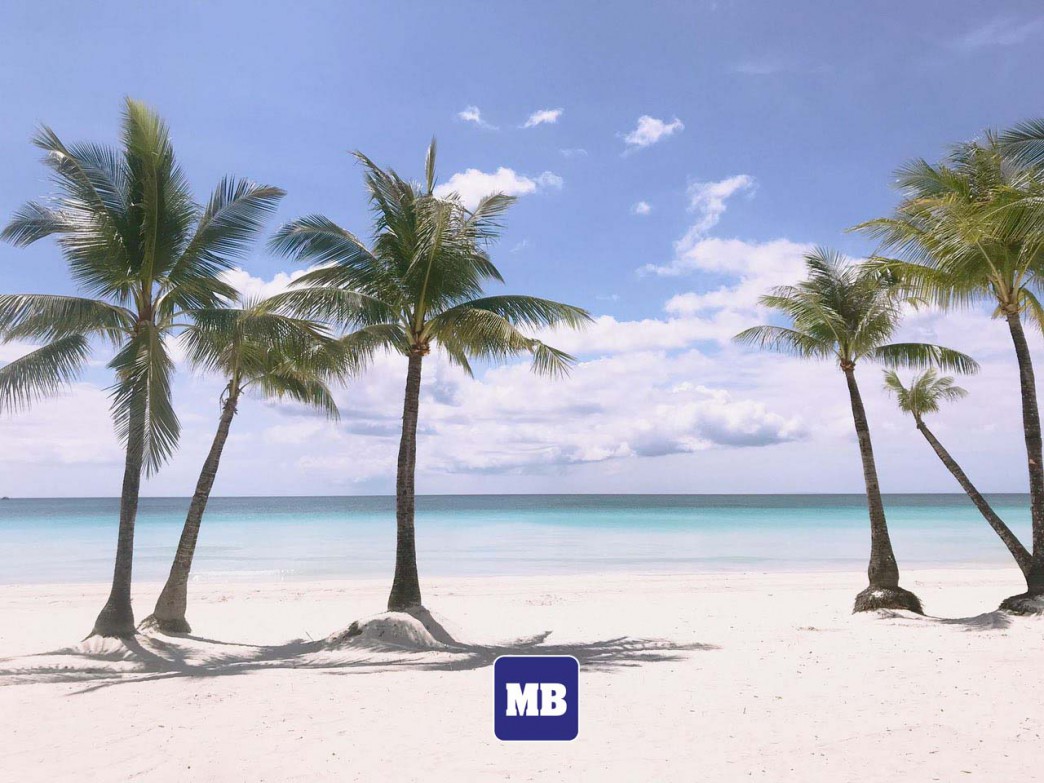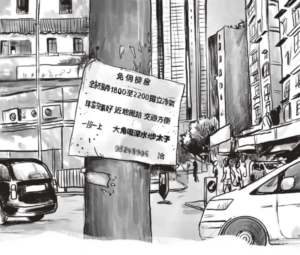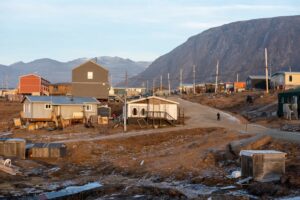A single mother, Atelma Jacosalem Familara used to feed her family by working as a massage therapist for weary tourists at Boracay, the Philippines’ most popular beach destination that is located in Malay town, Aklan province.
Atelma lost her job earlier this month. The spa she worked for was shut down due to the lack of proper permits. Shortly after, environmental officials issued notices for her to vacate her family’s bamboo-made house that sits on one of almost a dozen wetlands, which were said to have been reclaimed.
The businessmen have money at the bank, but we don’t. Can the government sustain us, the poor?
Boracay natives are the most likely to suffer from President Rodrigo Duterte’s abrupt order to halt the entry of tourists starting April 26, 2018, and pave way for the six-month rehabilitation program.
The resort island has contributed P56.14 billion (US$10.7 billion) to the economy and provided jobs to 17,328 registered local and foreign workers as well as 19,289 unregistered workers in 2017.
Atelma’s brother Thiting Jacosalem told Manila Bulletin that she could not sleep and stopped eating on the night she lost her job.
Anxiety grew as it dawned on the family that, with the island’s closure on April 26, it would be improbable to sustain her family.
The 42-year-old mother, who lost her husband to terminal illness five years ago, turned to the Bible and somehow drew strength from it, as she went around her neighborhood spreading the word of God.
“Kumakapit na lang siya sa panalangin kasi wala na siyang maasahan na iba (She’s praying for Divine Intervention. She has no one to turn to),” he added hours after social workers picked up Atelma and took her to a treatment center in the mainland.
Her plight is only all too familiar in Boracay.
The government’s crackdown to reverse the environmental damage to the resort island dubbed as “Asia’s 24/7” destination is beginning to upend the daily life of an estimated 56,444 residents.
“Sabi dati ni President Duterte, dapat mayroong malasakit. Ang tanong ngayon: Saan ang malasakit sa kapwa? Sa mga mahihirap? (President Duterte previously said there should be compassion. The question is: Where is the compassion for your fellow human being? For the poor?),” said Ron Degayo, a 39-year-old motorcycle driver.
“Daw kulang nalang silingon sang Presidente nga mag halin na kami diri sa Boracay (It’s short of saying the President want us to leave Boracay),” added Hilton Gelito, a 53-year-old native.
UNREGULATED TOURISM DEVELOPMENT

The pollution of Philippines’ most popular beach attraction brings to light the government’s failure to enforce existing regulations, which could have curbed its environmental degradation.
President Duterte’s description of Boracay as “cesspool” came from videos showing untreated wastewater being dumped into the sea from the island’s back beach, an area that is popular among foreigners for water kite surfing.
This came almost two months after Boracay experienced its worst flooding in history. Before Christmas in 2017, continuous rainfall flooded almost 90 percent of the island.
Inspectors found that businesses such as hotels, resorts and restaurants were illegally connected to the drainage system. Instead of only handling wastewater, it was also carrying waste.
There’s also the garbage problem.
In 2017, the Malay local government had to haul off more than 20,000-30,000 kilograms of trash from Boracay to the mainland after both tourists and residents complained of foul odour and health risks from uncollected garbage.
The construction of structures in areas considered as forestlands is also questionable. Of the 377.68 hectares of forestland area in this island, at least 90.61 hectares have land titles while 287.06 hectares are not titled.
Several establishments were also found to have violated easement rules, built structures that were less than 30 metres from the shoreline along the famous white-sand beach, while also encroaching the access roads. Several local residents, who requested anonymity, blamed local government officials as well as those from the Department of Environment and Natural Resources (DENR) and the Department of Tourism (DOT) for allowing investors to build in no-build zones.
Many claimed that corruption tempted some officials to wantonly issue permits to operate or build at the expense of the environment and upkeep of this island.
LIVELIHOOD IN PERIL
With the closure, it is estimated that 36,617 workers in Boracay will lose their jobs.
Shienna Caigoy, a 26-year-old waitress at one of the posh resorts, said she will have no choice but to go back to her hometown in Nabas, Aklan.
Not having reached regular working status, she will not qualify for the almost P2 billion (US$38.2 million) fund that will be distributed by the government to tide over Boracay’s displaced workers.
Dianaluz Señeres Tolentino is set to lose P21,000 (US$401.49) per month from workers renting rooms in her modest boarding house.
Worse, Dianaluz is worried that her residence, which she inherited from her parents, might be demolished by the government’s rehabilitation team.
UNFAIR PUNISHMENT
What is breaking the hearts of local residents is that the closure order will affect most individuals who have done nothing wrong to cause the problem in Boracay.
Resident Dan Gelito said that President Duterte should have thoroughly thought of his decision and only went after the violators. Dan pointed out that he spent P40,000 (US$764.66) so his house can legally connect to the sewage system while big businesses have been left untouched.
“Mga negosyante may kwarta sa bangko pero kami wala. Wala sila labot kon six months o pila ka tuig magsarado. Ang gobyerno, maka sustain bala sa amon nga imol? (The businessmen have money at the bank, but we don’t. Can the government sustain us, the poor?),” lamented the 54-year-old.
Even the 58-year-old tribal chieftain of the Ati indigenous group expressed dismay about President Duterte’s decision. Delsa Justo said several Ati families are already feeling the burden of the closure. Ati men, who were hired as construction workers, were laid off and are scrambling where to find money to feed their children.
PROPER REHABILITATION

With only a few days before the closure, Boracay locals can only hope that the government can realistically achieve the rehabilitation program.
In a mixture of Tagalog and English, Johnny Sacapaño said that he is supportive of the clean-up drive as long as it is done properly.
“Ang dumi talaga ng Boracay (Boracay is very dirty),” he noted.
For the 65-year-old, the time has come to properly enforce the law and regain what was lost in Boracay for the past 40 years.
“Dapat tuloy-tuloy ang rehabilitasyon at sulit din yung sakripisyo namin (The rehabilitation should be continuous and that our sacrifices will be worth it),” Johnny concluded.
This hope was ultimately realised.
A few days before the official opening of Boracay, the Task Force in charge of the island laid out new rules and regulations for both business establishments and tourists.
Despite the cost that the closure had on livelihoods, Boracay’s successful rehabilitation shows that with political backing, cleaning the environment is not an insurmountable challenge.
This story by Tara Yap was originally published by The Manila Bulletin on Aug 22, 2018.
On the last day before the closure of Boracay, Tara Yap reported the unhappiness of locals about the devastation it would have on their livelihoods. Published on Aug 22, 2018, the article is one of a series of features by the Manila Bulletin, that extensively documented the impact that the six-month closure with journalists from various beats – tourism, the environment and labour. In wake of President Duterte’s shock decision to close the island, a team of reporters from the Manila Bulletin interviewed stakeholders ranging from government agencies to public transportation drivers. Through a series of stories following the island’s transformation, the publication quelled rumours about the ‘real’ reason for the island’s closure, including the purported construction of a casino complex by a foreign company. Their efforts to hold government agencies to account proved successful in Boracay’s eventual restoration.




